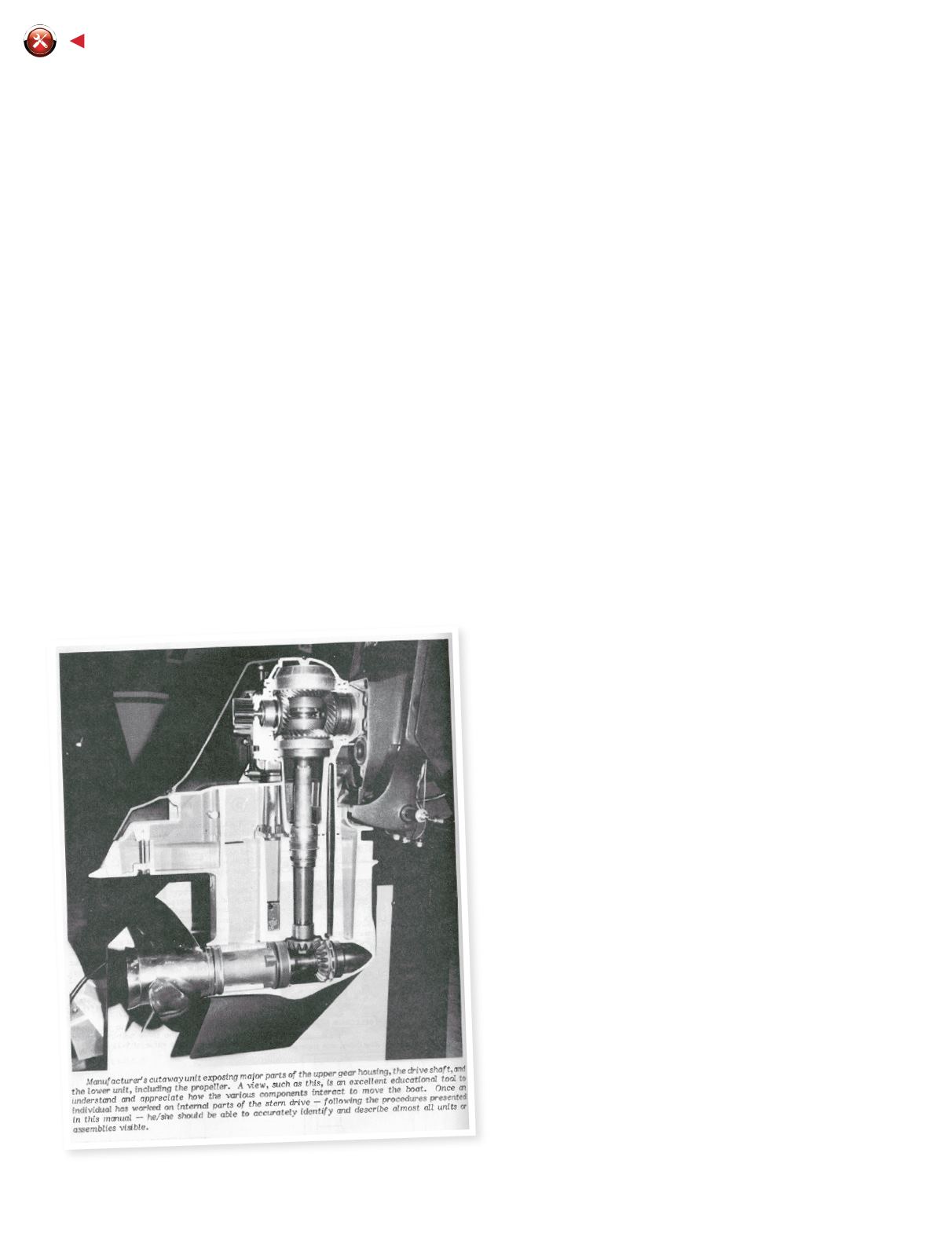
16
MARINE TECHNICIANTODAY | SPRING 2015
With this limited intro to gears, we can now go forward with the design
and function of gear lubes. Gear lubes must achieve the following (in no
particular order):
• Provide for proper shifting in manual transmissions in
all temperatures
• Maintain fluid separation of moving metal surfaces
• Reduce friction and wear
• Lubricate associated bearings
• Prevent scoring of highly stressed gears
• Provide fluid flow in cold temperatures
• Remove heat during operation maintaining safe temperatures
• Demulsify (separate from water)
• Prevent rust and corrosion
• Resist foaming and dissipate entrained air bubbles
• Be compatible with all seals
Gear lube is a complex product accomplishing a multitude of functions,
and if any of these functions are ignored, it can result in damage to
the components. The American Petroleum Institute (API) establishes the
service classifications for gear lubes as follows:
GL-1 through GL-3: Light loads on spiral and bevel gears usually satisfied
by motor oil.
GL-4: Designates the type of service characteristics of gears, particularly
hypoid in passenger cars and other automotive equipment operated
under high speed, low torque, and low speed, high torque conditions.
GL-5: Designates the type of service characteristics of gears, particularly
hypoid in passenger cars and other automotive equipment operated
under high speed, shock load; high speed, low torque, and low speed,
high torque conditions.
The Society of Automotive Engineers (SAE) establishes the system to
classify gear lubes by viscosity grades. The exact values for the viscosity
grades is beyond the scope of this article; however, understanding
the designation and what it means is important. Gear Lubes use a
designation such as 75W-90 to indicate the viscosity grade. The 75W is
the winter rating and establishes the cold weather performance of the
lubricant. The 90 is the operational viscosity and is measured at 212*F
(100*C). The smaller the W number the better the lube oil functions in
cold weather; the larger the second number the more viscous (thicker)
the oil.
Manufacturers stipulate the required GL and SAE classifications for a
particular gear set. The recommendation is based on the geometry (spur,
bevel, hypoid, etc.), loading and environment.
Marine applications usually come down to transmissions and outdrives.
Materials used in the construction of the components (brass compounds)
can require different types of additives in the gear lubes.
Gear Lubes are formulated by selecting base oils from petroleum or
synthetic oils and adding in specific chemicals to achieve the rated
classification. The additives consist of anti-wear, anti-foaming, anti-
oxidation, demulsifiers, corrosion inhibitors, friction modifiers, viscosity
improvers and extreme pressure additives and specialty additives where
required. The specific formulations are determined by the manufacturer
and all gear lubes are not created equal.
Original Equipment Manufacturers (OEMs) determine the required gear
lubes for the gear sets in their manufactured products. You can find
the specified gear lube listed in the owner’s manual, and in general,
this is the gear lube you should use; look for a viscosity rating, like
75W-90 and a classification, such as GL-4 or GL-5. A classic error
made many times by consumers is to buy thicker gear lubes to get
better protection. There are times when using a 75W-140 or 75W-110
instead of the specified 75W-90 is appropriate, but that change should
only be made on the advice of a lubrication professional. The failure
rate for gears is very low, but the failure rate for bearings is not so low.
Bearings are better lubricated by thinner oils, and so the rush to put
heavy oils in the gears can result in increased bearing failures. Thicker
gear lubes provide better shock absorption at the gear face and
prevent spooning or cupping gear teeth. Under normal operation the
outdrive gear set does not require the higher shock loading associated
with heavier gear lubes. When power is applied to the prop if the rate
of application is too high, the prop cavitates and the load drops off.
In very large props the continuous load is high enough to warrant a
TECH TALK


